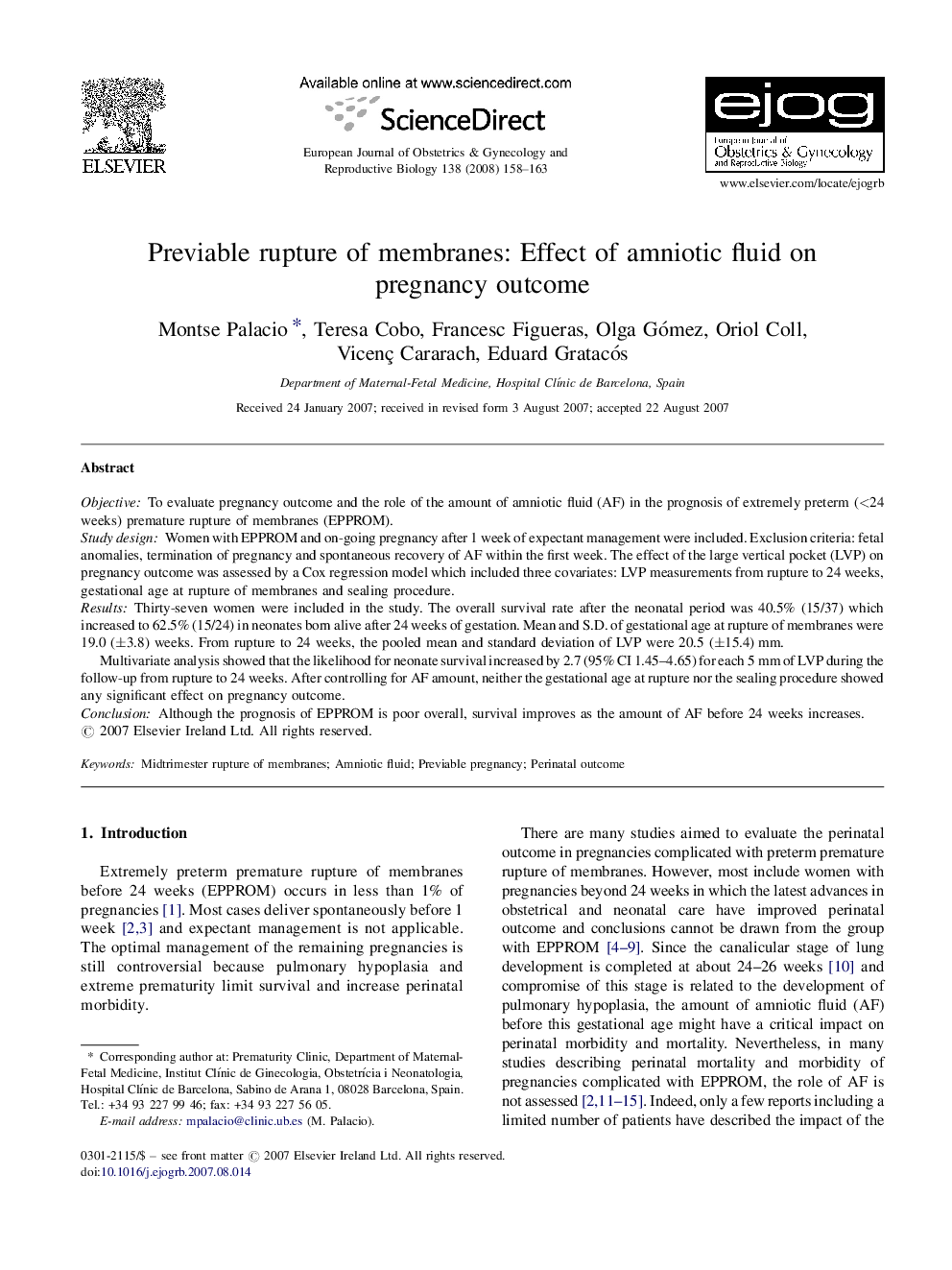| Article ID | Journal | Published Year | Pages | File Type |
|---|---|---|---|---|
| 3921804 | European Journal of Obstetrics & Gynecology and Reproductive Biology | 2008 | 6 Pages |
ObjectiveTo evaluate pregnancy outcome and the role of the amount of amniotic fluid (AF) in the prognosis of extremely preterm (<24 weeks) premature rupture of membranes (EPPROM).Study designWomen with EPPROM and on-going pregnancy after 1 week of expectant management were included. Exclusion criteria: fetal anomalies, termination of pregnancy and spontaneous recovery of AF within the first week. The effect of the large vertical pocket (LVP) on pregnancy outcome was assessed by a Cox regression model which included three covariates: LVP measurements from rupture to 24 weeks, gestational age at rupture of membranes and sealing procedure.ResultsThirty-seven women were included in the study. The overall survival rate after the neonatal period was 40.5% (15/37) which increased to 62.5% (15/24) in neonates born alive after 24 weeks of gestation. Mean and S.D. of gestational age at rupture of membranes were 19.0 (±3.8) weeks. From rupture to 24 weeks, the pooled mean and standard deviation of LVP were 20.5 (±15.4) mm.Multivariate analysis showed that the likelihood for neonate survival increased by 2.7 (95% CI 1.45–4.65) for each 5 mm of LVP during the follow-up from rupture to 24 weeks. After controlling for AF amount, neither the gestational age at rupture nor the sealing procedure showed any significant effect on pregnancy outcome.ConclusionAlthough the prognosis of EPPROM is poor overall, survival improves as the amount of AF before 24 weeks increases.
